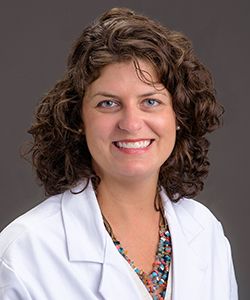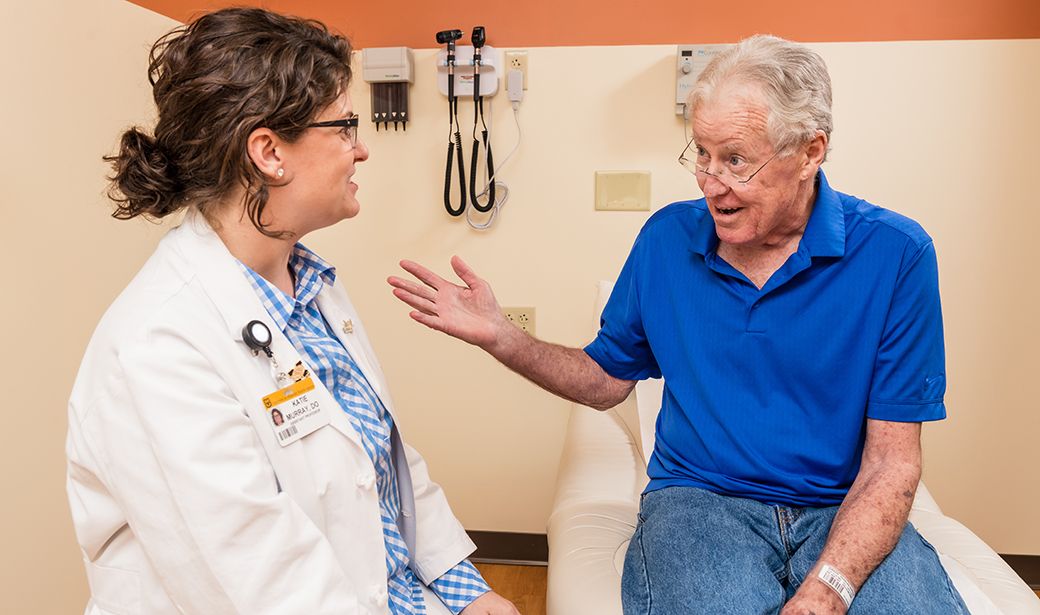Retirement was supposed to bring leisurely rounds of golf, fishing excursions and trips to visit lifelong friends. But Charles Gibson — a resident of Osage Beach known to friends and family as “Pooney” — was too busy looking for the closest restroom to enjoy his hobbies.
“I was urinating about 25 times a day,” Gibson said. “I had to stop every hour to go to the bathroom. It completed disrupted my whole day. It was so hard to go anywhere.”
Gibson made an appointment with a urologist at Lake Regional Health System. At first, he took medication for a possible enlarged prostate, but that treatment did not bring him relief. His urologist suggested further testing, and Gibson was diagnosed with bladder cancer.
“I took the diagnosis in stride,” Gibson said. “I asked, ‘Well, what are we going to do about it?’ and started treatment. I have tried to stay positive.”
The cancer continued to grow despite aggressive and appropriate treatments. Gibson was then referred to University of Missouri Health Care former urologic oncologist Katie Murray, DO, in the fall of 2018.

“With more aggressive bladder cancers, chemotherapy and surgical removal of the bladder is the standard treatment,” Murray said. “We work with our patients to choose what they’re most comfortable with based on their lifestyle. Patients have a few options after the bladder is removed, including ileal conduit and neobladder.”
Patients who opt for an ileal conduit urinary diversion procedure need to use an ostomy bag — an external pouch attached to the abdomen that collects urine. Patients who choose the neobladder procedure have a new bladder made from a piece of their intestine and do not use an ostomy bag.
Gibson opted for the neobladder.
“When I met Dr. Murray, I told her I wanted to keep my bladder,” Gibson said. “She could do anything she wanted to get rid of the cancer, but I didn’t want to pee in a bag. It was too unnatural to me.”
After finishing chemotherapy coordinated at Lake Regional Hospital, Gibson underwent surgery on Oct. 1, 2018. Murray removed Gibson’s bladder and stitched together almost two feet of his small intestine to form a new bladder. She connected the new bladder to Gibson’s kidneys and urethra so he could urinate normally.
Murray’s colleagues in urology, including Naveen Pokala, MD, and Stephen Weinstein, MD, also perform this procedure.
“It’s about quality of life and allowing patients to participate in the decision-making progress,” Murray said.
As with all surgeries, this procedure comes with some challenges, especially afterward. Therapy and time are required to regain urine continence after the new bladder is created.
“I took a therapy class that taught me how to strengthen my muscles,” Gibson said. “I have to do exercises each day, and that’s really helped a lot with any leakage I might have.”
Murray said smoking — including secondhand smoke — is the biggest risk factor for bladder cancer, followed by chemical exposures. Painters and workers in the dye, rubber, leather and aluminum industries are susceptible. Men are twice as likely to have bladder cancer as women.
Gibson, a former smoker, did not have any physical symptoms except his frequent need to urinate. Sometimes people notice blood in the toilet after urinating.
Unfortunately, there isn’t any screening test for bladder cancer, so Murray reminds people to get an annual physical exam so their doctor can test for blood in the urine. If there’s an abnormality, patients will be referred to a urologist for further testing.
“I’m really grateful for the people at Ellis Fischel Cancer Center that helped me get to this point,” Gibson said. “I’m back to playing golf with my friends during the week and getting to fish when I want.”



